Soft pastels are a brilliant medium for beginners to try, as they can be used to create beautiful pictures using a few easy techniques.
Pastels are also suitable for older children to use. They’ll love the rich colours and the way they blend smoothly together. This medium is popular with experienced artists, as soft pastel art has a wonderful dream-like quality.
Soft pastels are a good option for when you want to sketch outdoors. They’re very portable and can be used to capture a scene quickly. Some artists like to use soft pastels for life drawing, as they can sketch the figure in front of them with just a few pastel marks.
Once you’ve learnt some simple soft pastel drawing techniques, you’re bound to fall in love with this fantastic drawing medium!
Read on to explore our pick of the best pastels to buy or scroll down to find out how to use soft pastels.
What are soft pastels?
Soft pastels are sticks of pigment with a chalky consistency, which are held together with a binder such as chalk or clay. They usually come in stick form, but you can also buy pastel pencils to create more precise drawings. Soft pastels crumble to a powder when applied to paper and the colours can be blended together easily..
Soft pastels have a long history and have been used by artists for hundreds of years. The medium is believed to have originated in Northern Italy during the Renaissance. They were used for sketching by the likes of Michelangelo and Leonardo da Vinci.
What are soft pastels good for?
Soft pastels have lots of wonderful qualities which make them one of our favourite mediums! They’re quick to set up, have a wide range of vibrant colours and are suitable for artists of all abilities.
Soft pastels lend themselves to a variety of different subjects too, including portraits, landscape drawings and still life art.
Pastel drawing is sometimes referred to as pastel painting, but they’re both the same thing – it’s just called a pastel painting when the pastels completely cover the paper.
What’s the difference between chalk and soft pastels?
You’ll often see soft pastels referred to as chalk pastels and they are the same thing. Soft pastels are often called chalk pastels because of their powdery texture, but they are not actually made of chalk.
Chalk is sometimes used as a binding agent to hold the soft pastels together, but the primary ingredient is pigment.
Which is better: soft pastels or oil pastels?
Soft pastels and oil pastels are very different mediums and each has its own advantages and disadvantages.
While soft pastels are light and chalky, oil pastels have a much thicker consistency and are more closely related to oil paints. Oil pastels can be used to produce artwork that resembles a painting and are less likely to crumble.
Soft pastels are more dusty and will have a matt finish, while oil pastels can have a waxy feel and a glossy sheen.
Soft pastels can be brushed off the paper and need to be sprayed with a fixative to preserve the drawing. Oil pastels, on the other hand, are more permanent.
It’s worth experimenting with both pastel types to discover which suits your drawing style. Take a look at our oil pastels for beginners guide to get started.
What soft pastels should I buy?
There are lots of soft pastels available to suit a range of budgets. However, it’s worth bearing in mind that the quality can vary a lot between the cheapest pastel sets and the more expensive ones.
Cheaper pastels may crumble and snap more frequently when you’re drawing with them, which can be very annoying. The colours are often not as vibrant as pricier pastel sets too.
When buying soft pastels, look for ones with lower amounts of binding agents if you want richer colours.
Look out for a reputable art supplier when choosing your soft pastels. You can’t go wrong with reputable brands such as Faber Castell, Rembrandt or Derwent.
So what else do you need for pastel art? We’d recommend using pastel paper, which is textured and will pick up the pigment easily.
It’s also a good idea to buy some fixative spray, which will stop your drawing from smudging when you’ve completed it.
Soft pastels can be blended using your fingertips, but you may also wish to buy a blending stump to keep your fingers clean.
Best soft pastels and pastel art materials
Faber Castell soft pastels
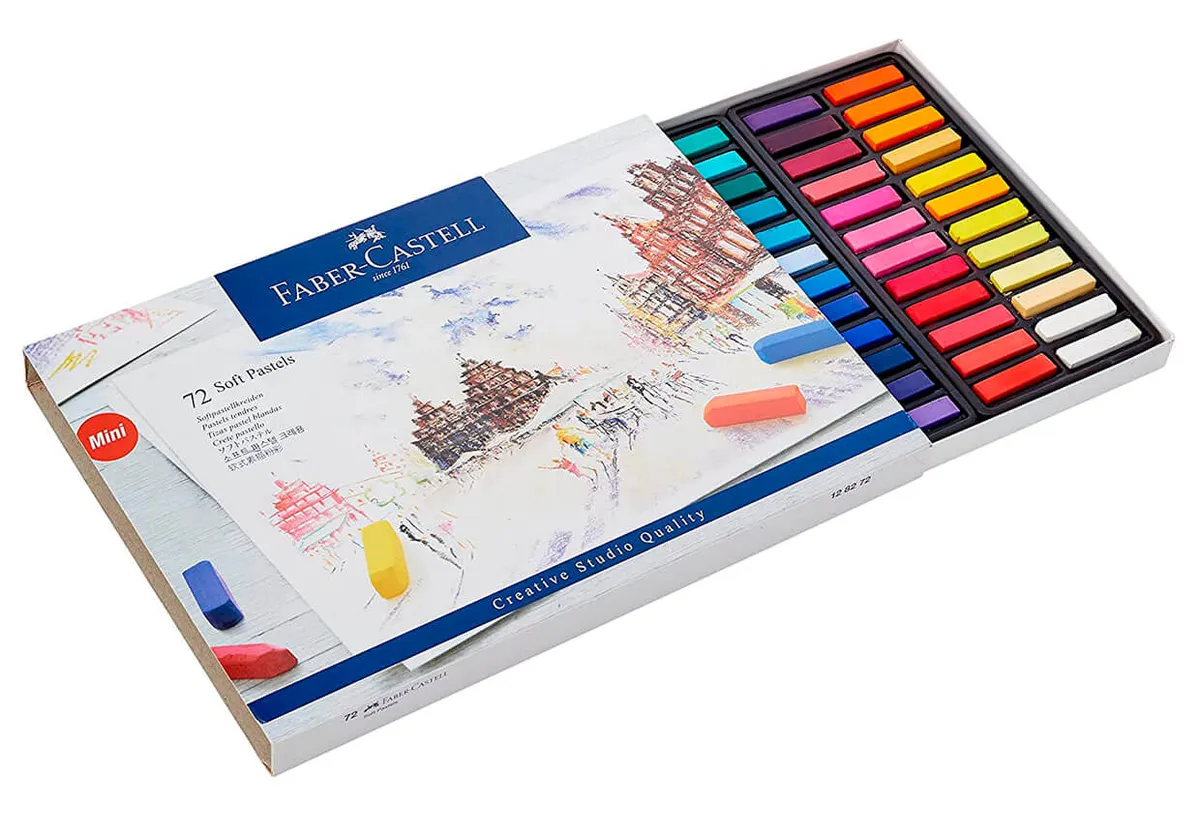
This set of soft pastels from Faber Castell features 72 stunning colours. You’ll never feel restricted in your colour choices, as there’s a shade for every project.
These beautiful soft pastels are a dream to blend and you’re bound to be pleased with the results. The consistency of the pastels is excellent – the colours can be applied smoothly and are not too crumbly.
Bear in mind that these soft pastels come in a miniature size, which makes this a portable set to use on the go. If you prefer larger sticks, this isn’t the right set for you. However, you will find that this set lasts a long time even with regular use.
Derwent Academy soft pastels
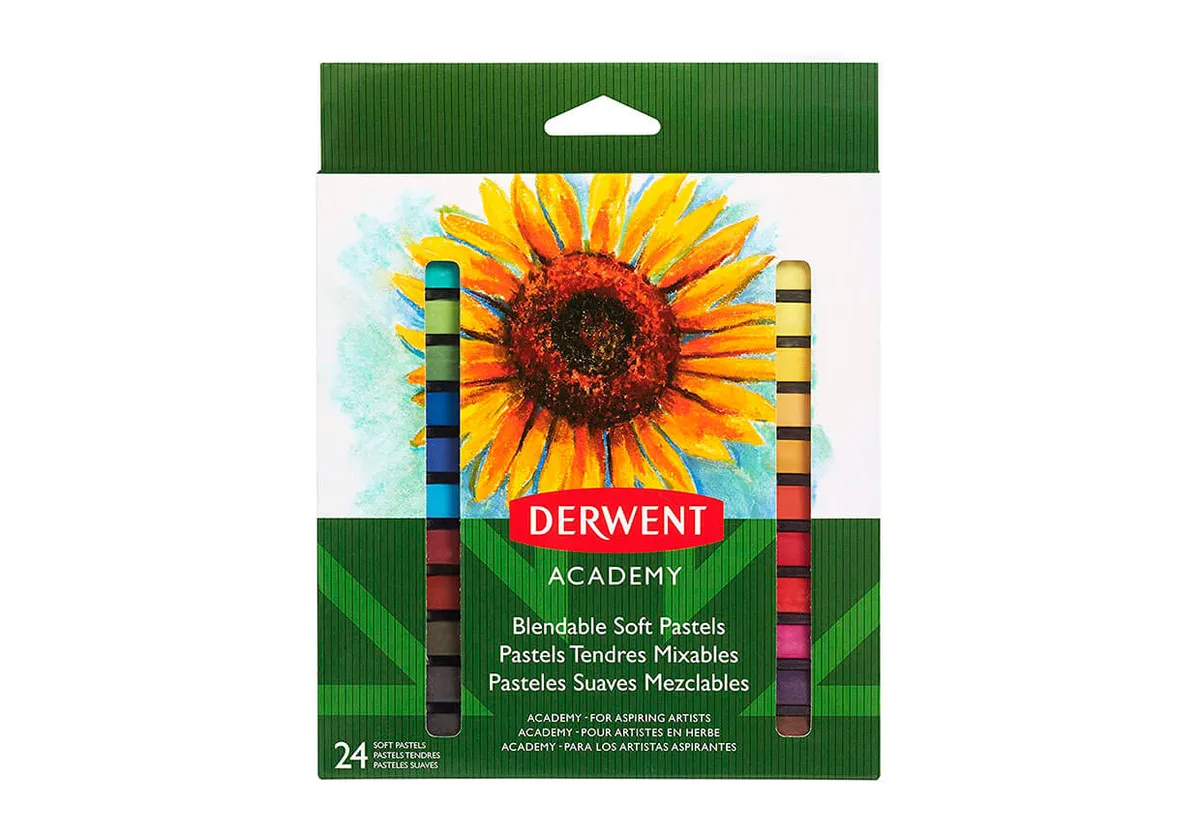
Derwent’s Academy range is designed with students in mind, so this soft pastel set is ideal for beginners.
This set is great value for money, so it’s a good choice if you’re looking for your first pack of pastels. If you enjoy using pastels, you can always upgrade to a more expensive set at a later date. Derwent has a fantastic reputation for producing high-quality art supplies and this set is no exception.
This would be a great gift for an artistic friend or relative to allow them to explore a new medium – or as a treat for yourself!
The Derwent Academy soft pastels set comes with 24 vibrant and highly blendable colours, which will make your drawings shine.
Rembrandt soft pastels
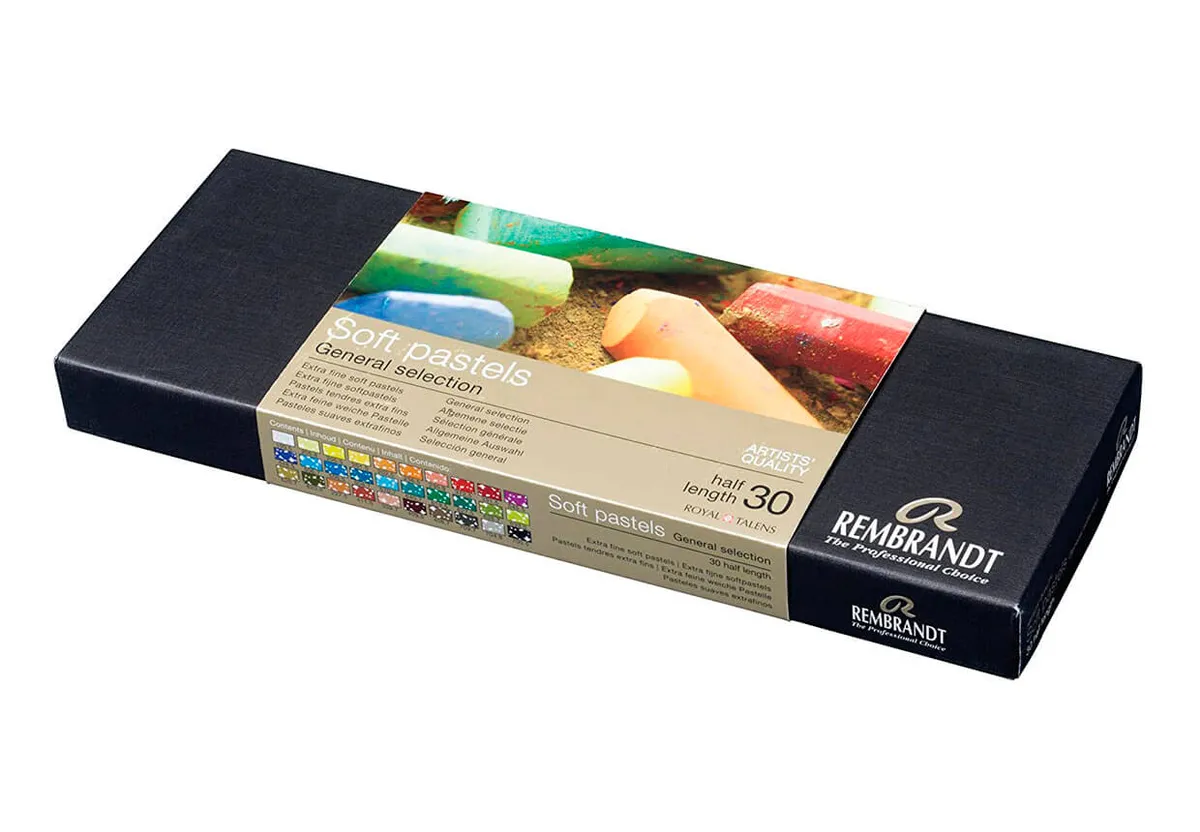
You’ll be able to create very professional-looking pastel drawings using this set created by Rembrandt. There is a fantastic selection of colours to choose from in an array of deeply satisfying hues.
Like the Faber Castell set, these pastels are also on the shorter side, which some artists may find difficult to work with. If that's the case, then opt for a set of longer pastels instead.
However, these pastels draw smoothly onto paper and are suitable for most art projects. They’re good value for the price and the pastels have a premium feel when you draw with them. They really are a pleasure to use!
Conté à Paris pastels
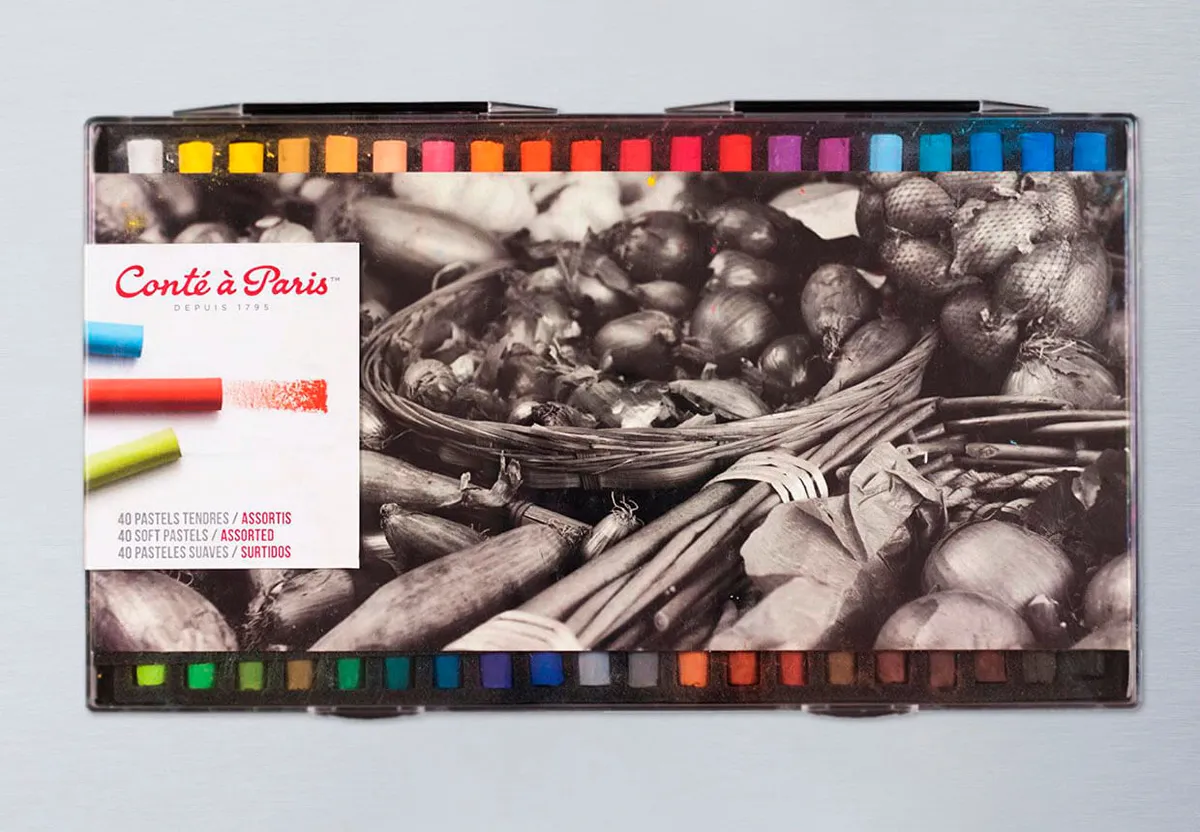
If you’re a fan of full-sized pastels, this set of soft pastels from Conté à Paris could be just what you need!
This soft pastel set comes with 50 pastels in every colour you could wish for. The colours are all lightfast too, so they won’t fade over time.
These pastels have a lovely creamy consistency and are wonderful to draw with.
- Buy Conté à Paris pastels from Cass Art
Derwent pastel pencils
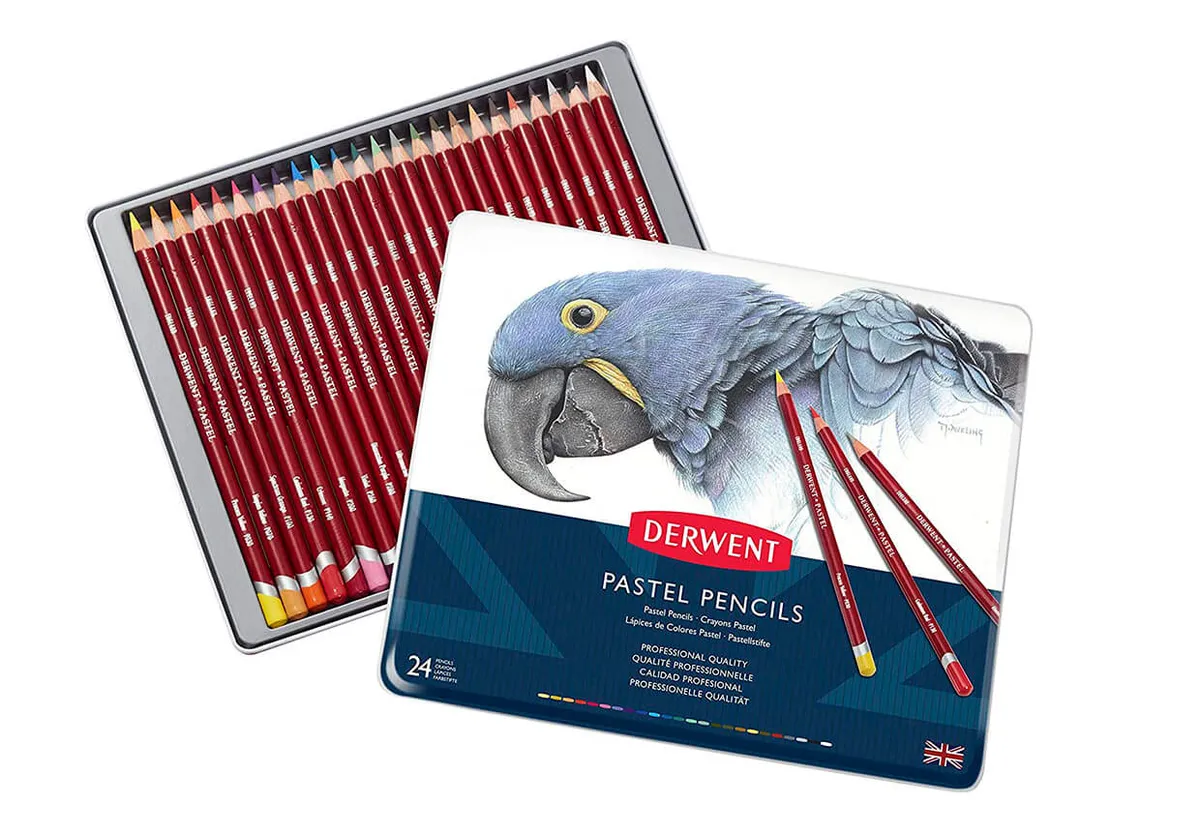
When you get into pastel drawing, you may find it useful to have a set of pastel pencils to hand.
Pastel pencils can be used alongside traditional soft pencils or used by themselves. They’re great for those times when you want your drawings to be more precise.
Pastel pencils also tend to be less messy than soft pastels and will help you to keep your fingers clean.
This fabulous set from Derwent comes with 24 coloured pastel pencils to enjoy. Derwent sells pastel sets to suit most budgets, ranging from small sets of six pencils to bumper sets of 72.
Daler Rowney Murano pastel paper

Pastels often look very striking on coloured paper. Daler Rowney’s Murano pastel paper range includes a selection of different pads, with each pad including a mixture of coloured papers to choose from.
These pastel paper pads come in three themes: cool, neutral or warm. This means that you can choose the right shade for your project with ease. It’s fun to play around with drawing on different backgrounds too.
When buying pastel paper, we would recommend choosing a paper specifically designed for pastels rather than opting for mixed media paper. Pastel paper has a rougher surface which helps to pick up the soft pastel pigment.
Perfix Colourless Fixative spray

Fixative spray is an essential piece of kit for any pastel artist. You’ll need to spray your drawing with fixative when you’ve finished to prevent smudging.
As with any aerosol, make sure you use it in a well-ventilated space so that you don’t inhale any fumes. One coat should be fine for most drawings. It should hold the drawing in place without dulling the colours at all.
How to use soft pastels
Ready to start using your soft pastels? There are a few handy tips and tricks that you can try to get the most out of your pastel art.
1. Sketch an outline
Before you begin, sketch the outline of your drawing lightly using a pencil as a guide. The pencil marks won’t show through once you start applying the soft pastels.
If you’re feeling confident, you can skip the sketching stage and draw directly onto the paper with your pastels.
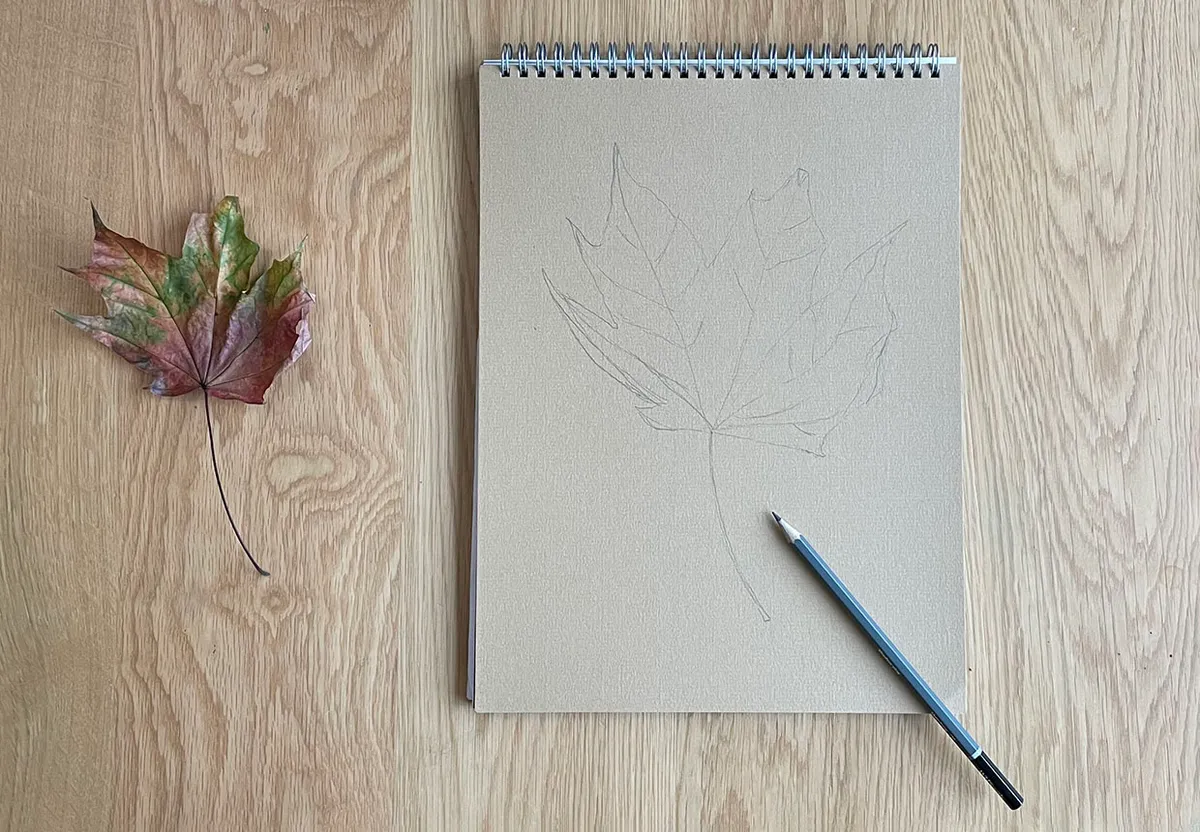
2. Use light pressure
The first layer of your pastel drawing should be very light so you can erase any mistakes. It’s easy to overload your paper with pigment early in the drawing process, but this will make things much more difficult. Less is more when it comes to pastel drawing!
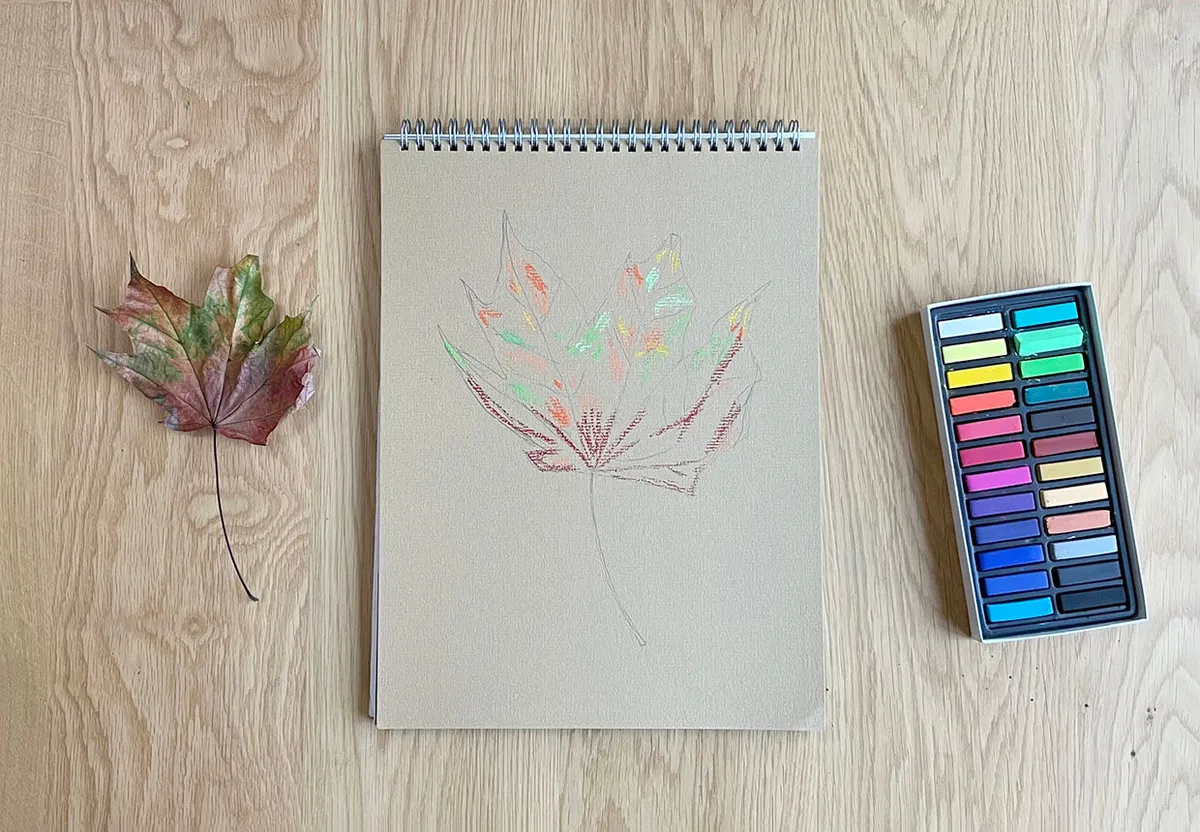
3. How to blend soft pastels
Blending is one of the easiest techniques to master. You can blend by rubbing a finger or a blending stump over your pastel marks to soften the lines.
Once you’ve blended one colour, try adding a second colour or a third. You can draw on top of your first colour to add an extra tone.
Try drawing a few colours side by side and using a finger to blend them into one another.
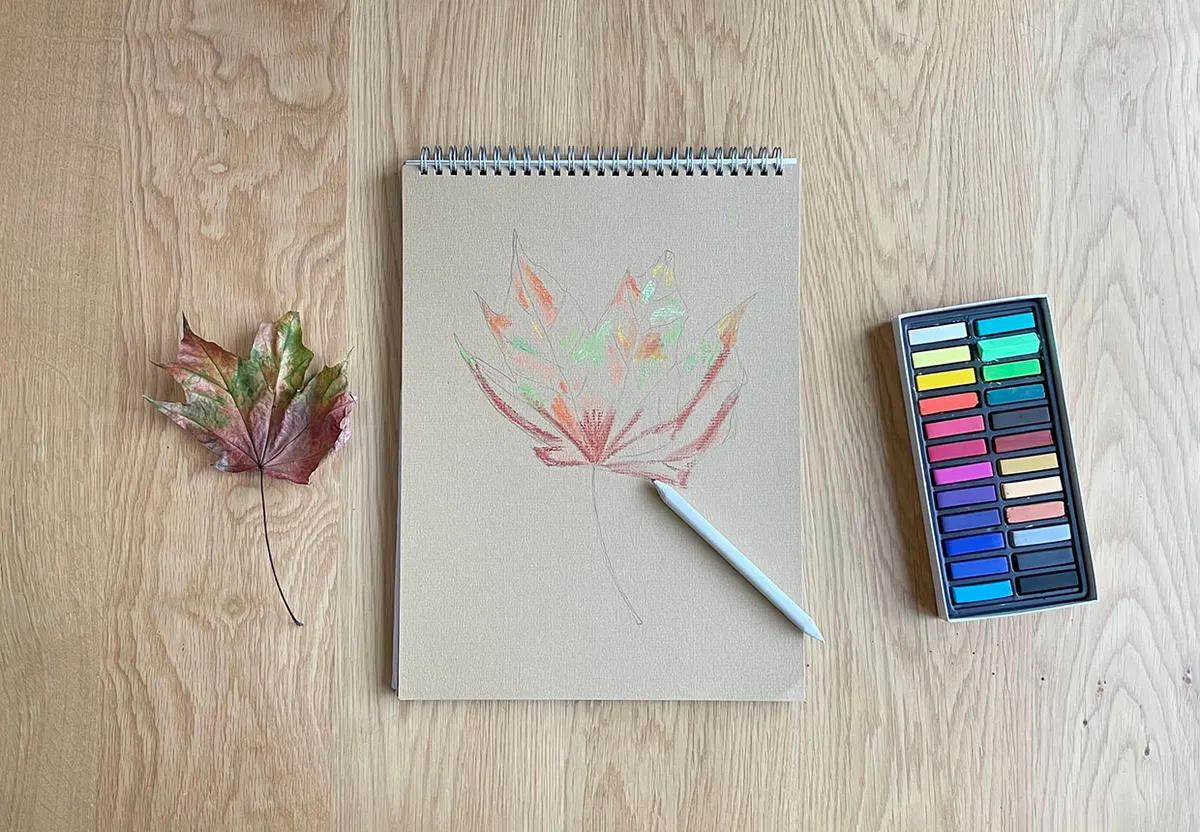
4. Use fixative spray to build layers
Fixative spray is usually used to seal a finished pastel drawing, but it can also be used to build up layers of colour on a pastel painting.
Fixing the pastels means that you can draw over the top without smudging the layer underneath. Try sealing your drawing, then dragging the edge of a soft pastel over the top to add texture to your drawing.
Fixative spray can also be used if you want to conceal a mistake on your drawing. Simply spray the part of the drawing you want to correct and wait for it to fully dry. You can then draw over the top.
5. On the edge
When you use soft pastels, you’re not restricted to using the tip. You can create very interesting effects by dragging the edge of the pastels over your paper.
On a piece of scrap paper, practice making different marks to see what the pastels can do.
6. Erase areas of your drawing
A mouldable eraser is a really useful piece of kit to have in your art stash. It can be used to rub away areas of your pastel drawing to create interesting textures or remove any mistakes.
7. Paint with pastels
Drawing with pastels is sometimes referred to as pastel painting, but did you know that you can actually paint with pastels?
You can go over your pastels with a wet brush to create a wash on your drawing (a dry brush can be used for blending too!).

8. Scumbling
Bring texture to your drawings with this fun pastel technique! Scumbling is a term often used in painting, but it can refer to a drawing style too.
Draw onto your paper using small circles to create a rough, swirling pattern.

What to draw when you’re bored
We all have days when we can’t decide what to draw. Find sketching inspiration with our easy drawings for when you’re feeling uninspired.
9. Hatching
Hatching or cross hatching is a drawing technique which is primarily used to create a textured look, but can also be used to build up layers of colour.
To create a hatched effect, draw short lines in one direction on your paper, then draw across those lines in a different direction. This should look a little like a grid. You can try drawing the lines at different angles to create interesting shapes and textures.
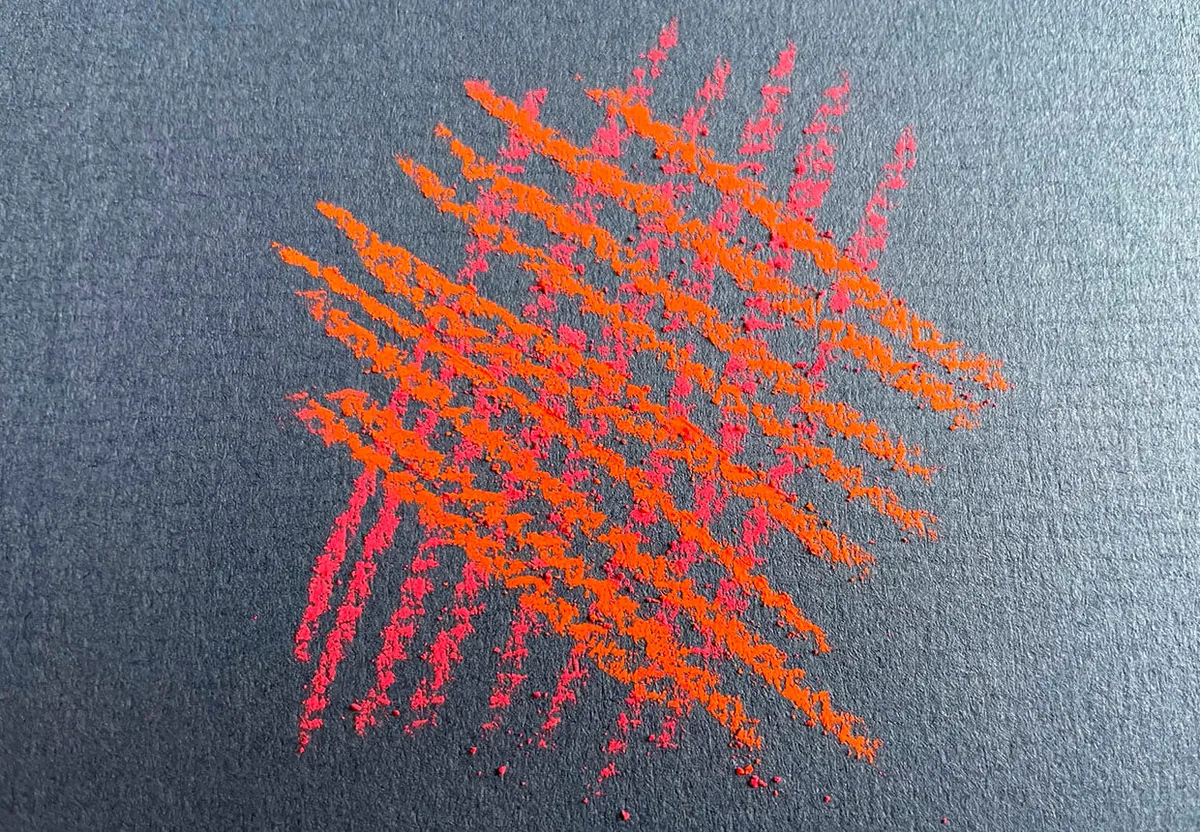
10. Go dotty for stippling
Stippling is the art of drawing using dots. You can use stippling to mix different colours together or to add a new texture to your drawing.
It can also be used in a similar way to shading, where it can help give an object a three-dimensional look. Enjoy playing around with this technique to see what effects you can achieve.
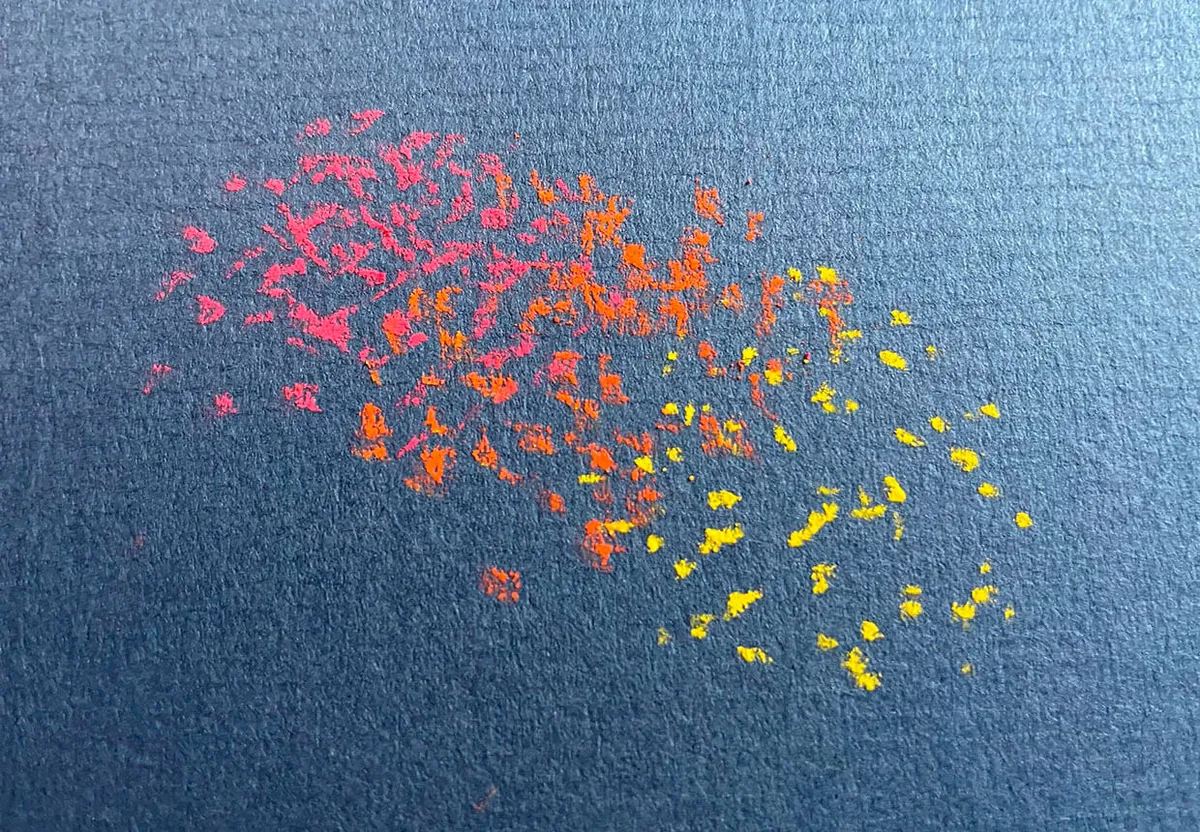
11. Use powdered pigment
The powdered pigment can be applied directly onto your paper using your finger or flicked to create a sprayed look. Scrape the pigment off the pastel stick carefully using scissors or a knife.
12. Prop your drawing up on an easel
Soft pastels can create a lot of dust, which can build up on your drawing and on your workspace.
If you’re struggling to keep your drawing dust-free, try using an easel so that the dust falls downwards. This will help you to keep your drawing clean and prevent smudging.
13. Know when to stop
The hardest part of a drawing is often knowing when to stop. When you’re new to pastel drawing, it can be easy to do too much and end up with a blurry mess.
Step back from your work regularly to see how it’s looking. This will give you a sense of how the drawing looks overall and will help you to decide when it’s done.
Getting the most out of your pastel art
Soft pastels are a fun medium for artists of all ages to experiment with. They’re suitable for everyone from absolute beginners to professional artists.
Pastels can be used to produce incredible blended drawings in brilliant shades and can be used for most art subjects. They’re perfect for everything from landscapes to portraits.
Soft pastels are a fantastic medium to have in your repertoire. You just need to learn a few easy drawing techniques to kickstart your pastel art obsession!
Get into charcoal drawing
Once you’ve got the hang of soft pastels, you may also enjoy charcoal drawing, which uses similar drawing techniques. Pick up a new skill with our charcoal drawing for beginners guide.
